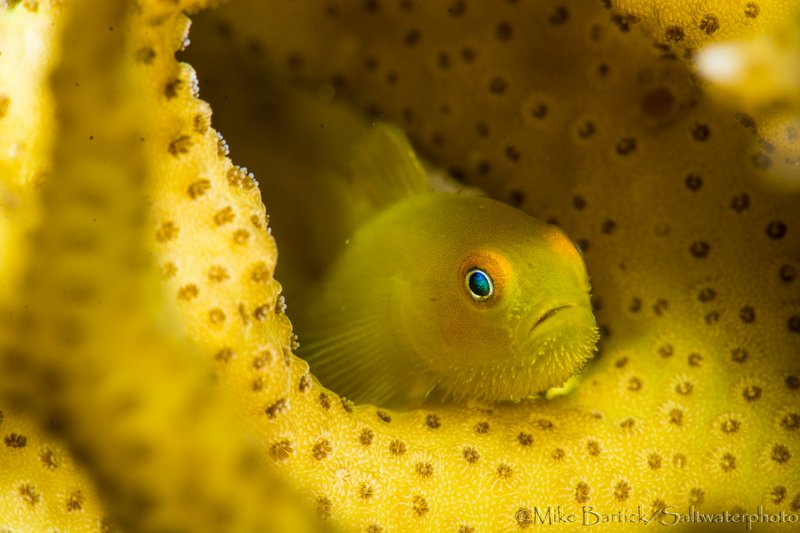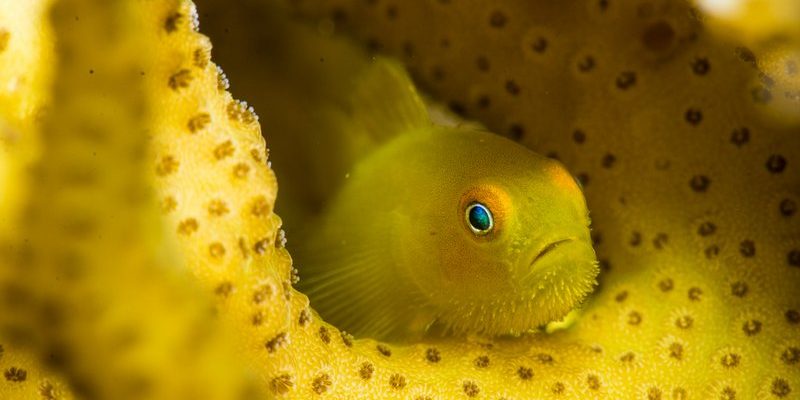
Goby fish, often found in warm ocean waters and brackish environments, exhibit some amazing behaviors that help them thrive. As we talk about how these fish interact with their surroundings and each other, we’ll uncover the unique methods they use to navigate and communicate. You might find yourself wondering how such small creatures manage to function in vast oceans filled with predators and obstacles. Well, that’s what we’re here to figure out!
Understanding Goby Navigation
Navigating through underwater environments can be challenging, but gobies have developed some pretty incredible techniques. One of the most fascinating aspects of their navigation skills is their use of landmarks. Just like we might use a favorite coffee shop or park as a reference point, gobies rely on the shapes and colors of rocks, corals, and other structures to find their way. This instinct helps them recognize familiar spots, which is crucial, especially when they’re hunting for food or escaping predators.
Additionally, gobies often prefer to stay close to the substrate—this is the ocean floor where they can hide. You might see them dart in and out of crevices and among seaweed, using these natural features as shields. By sticking to familiar routes and using their surroundings, they communicate with their environment, ensuring they know where to go.
You might be surprised to learn that some gobies have a unique adaptation: they can even sense changes in the water to help them navigate! Their lateral line system, a line of sensory organs along their sides, can detect vibrations and movements around them. This allows gobies to sense the approach of predators or even other gobies, making navigation not just about visuals but also about feeling the world around them.
How Gobies Use Their Coloration
One remarkable aspect of gobies is their coloration. These little fish come in bright colors and patterns that can serve various purposes, from camouflage to communication. Gobies often change colors depending on their mood or environment. For example, if they feel threatened, they might darken to blend in with their surroundings, making it harder for predators to spot them.
In social situations, color plays a critical role in communication. Male gobies, for instance, can display vibrant colors during mating rituals to attract females. You might see a male flashing its brilliant hues, signaling not just availability but also health and vigor. This visual display is a clear sign of fitness, helping females choose the best partner.
In addition to attracting mates, colors can signal alarm or aggression. When a goby feels threatened by a nearby fish, it might flash its colors to warn others of possible danger. This form of communication helps maintain safety within the group, reminding everyone to stay alert.
Sound Communication in Gobies
While color is essential, gobies also use sound to communicate. You might not expect tiny fish to make noise, but they do! Gobies produce sounds by contracting their swim bladders—an internal gas-filled organ that helps them maintain buoyancy. These sounds can range from clicks to grunts, each with specific meanings.
For instance, during the mating season, males often make a series of clicks to attract females and ward off rivals. The more vibrant and loud the clicks, the more appealing they are. Interesting, right? Essentially, these sounds act like a fishy call to action, helping them find mates while navigating social dynamics.
Moreover, the sounds serve as alerts. If a goby senses danger, it can emit a rapid series of clicks to warn its companions. This auditory cue allows the group to respond quickly, helping everyone stay safe. So, next time you see a goby, remember they might be chatting away beneath the waves!
Social Behaviors of Gobies
Goby fish have a rich tapestry of social behaviors that enhance their survival and communication. Many species are known for forming symbiotic relationships with other fish or invertebrates. For example, some gobies live in burrows that they share with shrimp. The shrimp dig and maintain the burrow, while the goby stands guard, providing protection. This partnership is a perfect example of how they communicate their roles: the shrimp feels safe because the goby is vigilant, while the goby benefits from a cozy home.
They also exhibit interesting group dynamics when foraging for food. Gobies often stick together when hunting, using a leader-follower system. The lead fish will guide the group to food sources, and others follow closely. This behavior not only makes finding food easier but also enhances their safety. The more gobies there are, the harder it is for predators to single out one fish.
Additionally, gobies have a variety of body postures and movements that convey messages. For example, a goby might puff up or display aggressive gestures to show dominance over a territory. These subtle movements are essential for maintaining social order and reducing conflicts among the group.
Challenges Gobies Face in Their Environment
Despite their impressive navigation and communication skills, gobies face numerous challenges in their habitats. Pollution, habitat destruction, and climate change are significant threats to their survival. As coral reefs decline, gobies lose their hiding and breeding places. This environmental change not only impacts their physical space but also disrupts their communication methods, as the loss of landmarks can confuse their navigation.
Predators are another constant challenge. Larger fish, seabirds, and even some marine mammals see gobies as tasty snacks. Gobies rely on their camouflage and quick movements to evade these threats. However, any changes in their environment can make these strategies less effective.
Additionally, gobies must compete for resources, such as food and shelter, against other fish. This competition can lead to conflicts, and their social communication becomes critical. By displaying strength or cooperating with others, gobies can navigate the complex social landscape of their underwater world.
Why Understanding Gobies Matters
Learning about how gobies navigate and communicate isn’t just interesting—it’s crucial for conservation efforts. By understanding their behaviors, we can appreciate the delicate balance of marine ecosystems. Gobies play a vital role in nutrient cycling and maintaining the health of coral reefs. Recognizing their importance helps advocate for efforts to protect their habitats.
Moreover, gobies serve as indicators of marine health. Changes in their populations can signal broader environmental issues, alerting scientists and conservationists to potential problems. By monitoring goby populations and their behaviors, we can gain insights into the overall condition of marine environments.
As we continue to explore the oceans, it’s essential to respect and protect these remarkable little creatures. They may be small, but their impact on the ecosystem and their unique ways of thriving make them worthy of our attention.
In conclusion, gobies are not just cute little fish; they’re skilled navigators and communicators with fascinating behaviors. From their unique navigation techniques to their colorful displays and sounds, gobies showcase the beauty and complexity of life under the sea. Understanding these fish helps us appreciate the intricate web of life in our oceans and emphasizes the need to protect their habitats for future generations. So, the next time you see a goby, take a moment to appreciate its skillful dance through the waters!

